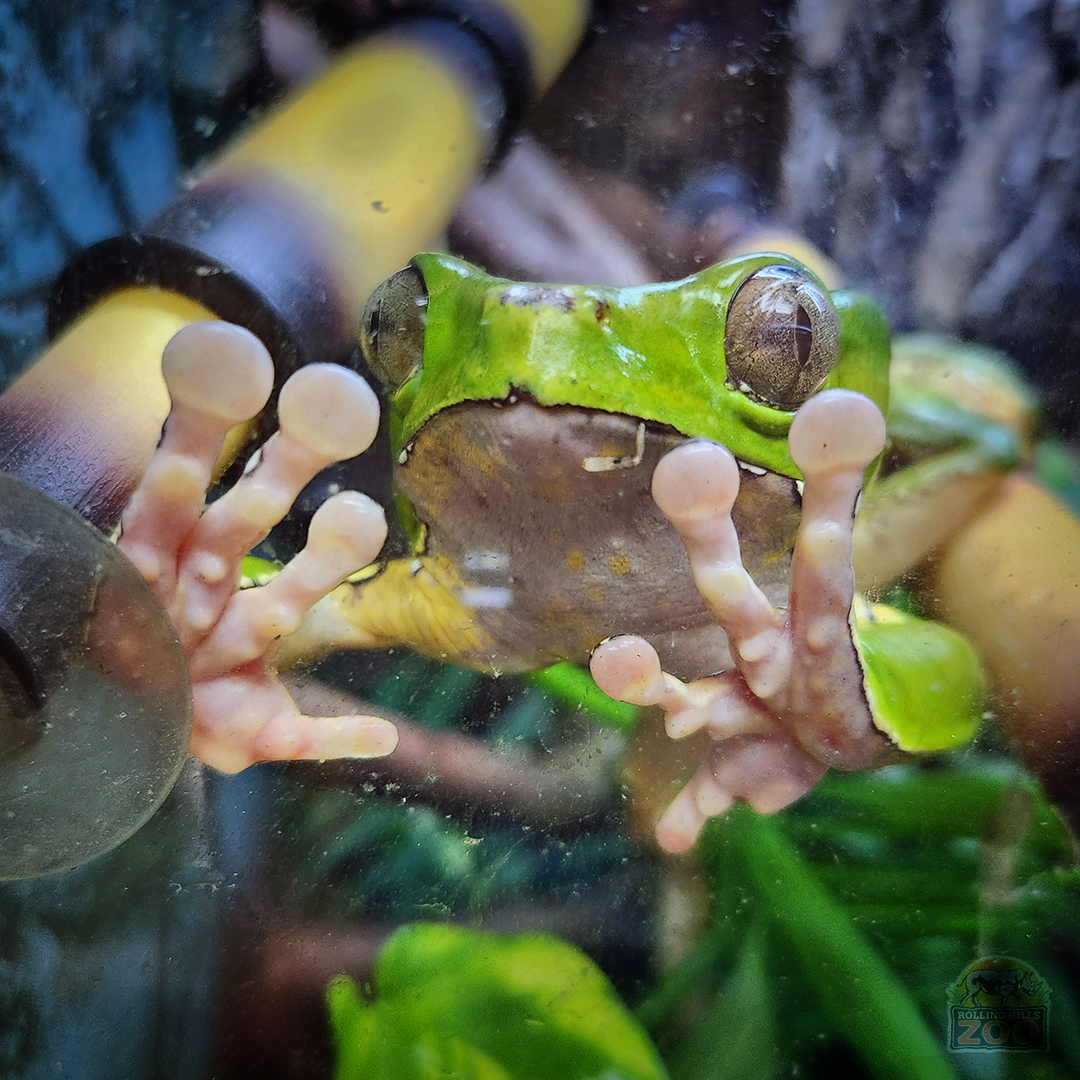- Discover the fascinating biology and unique adaptations of the waxy-monkey treefrog.
- Explore the ecological significance and the conservation efforts surrounding this species.
- Understand the role of zoos in wildlife conservation and education.
- Learn about Bamboo Bay at Rolling Hills Zoo and its unique offerings for visitor engagement.
The waxy-monkey treefrog, often referred to as the giant monkey frog or giant leaf frog, is a captivating amphibian known for its remarkable adaptations that have piqued the curiosity of biologists and nature enthusiasts alike. Their distinct, smooth, and waxy skin is not merely a trait of beauty but a crucial adaptation for survival. This article delves into the biology of these extraordinary creatures, their ecological roles, and the conservation initiatives in place to protect them, with a special focus on the efforts at Rolling Hills Zoo’s Bamboo Bay.
The waxy-monkey treefrog is a product of nature’s ingenuity, equipped with unique adaptations to thrive in its native habitats. Originating from the rainforests of South America, these amphibians have developed a novel physiological trait: the ability to produce a lipid-based secretion resembling sunscreen. This adaptation allows them to remain active during the daytime, which is unusual for many frog species that rely on nocturnal activity to avoid desiccation. This secretion lubricates their skin, reducing moisture loss, and provides protection from the harsh effects of sunlight.
Their robust limbs and adhesive pads enable them to navigate the forest canopy with ease, demonstrating an impressive level of arboreal specialization. They possess keen eyesight, aiding them in detecting predators and prey. Additionally, these frogs exhibit fascinating reproductive behavior, with males often engaging in vocalizations that attract mates while also establishing their territories.
The ecological importance of the waxy-monkey treefrog cannot be understated. As insectivores, they contribute significantly to controlling insect populations, thus maintaining the balance within their ecosystems. Moreover, they serve as prey for a variety of larger predators, establishing themselves as integral links in the food chain.
Despite their crucial role, these frogs face numerous threats. Habitat destruction due to deforestation and the illegal pet trade potentially jeopardizes their populations. Climate change further exacerbates these challenges by altering their natural habitats. These factors underscore the urgent need for comprehensive conservation strategies.
Zoos like Rolling Hills play a pivotal role in the conservation of amphibians such as the waxy-monkey treefrog. By providing sanctuary from natural and anthropogenic threats, they not only help preserve these species but also foster a deeper understanding of their biology and ecology among the public. With dedicated breeding programs, educational outreach, and habitat simulation, zoos contribute substantially to global efforts in amphibian conservation.
Educational programs at zoos are instrumental in raising awareness about the plight of such amphibians. They serve to educate visitors about the larger ecological and conservation issues at play, thereby fostering a generation of environmentally conscious individuals. Through interactive exhibits and up-close encounters, visitors gain invaluable insights into the behaviors, adaptations, and ecological roles of these fascinating creatures.
Bamboo Bay at the Rolling Hills Zoo stands as a testament to the zoo’s commitment to conservation and education. This vibrant area provides a tropical respite for visitors during colder months and showcases an array of reptiles, amphibians, and aquatic life. Visitors can observe the waxy-monkey treefrog in a habitat that mirrors its natural environment, complete with lush vegetation and controlled climate.
The experience at Bamboo Bay is designed to captivate and educate. Visitors of all ages can learn about the challenges facing these species and the steps being taken to conserve them. With knowledgeable staff and engaging exhibits, Bamboo Bay is an educational haven that inspires visitors to support conservation efforts and develop a deeper appreciation for amphibian biodiversity.
In summation, the waxy-monkey treefrog is an incredible example of the marvels of evolution and adaptation. By understanding its biology and the threats it faces, we can better appreciate the role of conservation-focused institutions such as Rolling Hills Zoo. Through education and direct conservation efforts, there is hope that these frogs will continue to thrive, ensuring their continued contribution to the ecosystems they inhabit.
*****
Source Description
Meet Mi’jo, our waxy-monkey treefrog! 🐸 Also called the giant monkey frog or giant leaf frog, these unique amphibians are known for their smooth, waxy skin and incredible ability to survive in dry conditions by producing their own sunscreen-like substance. How cool is that? 🌞
Escape the chill during your winter adventure at Rolling Hills Zoo, and step into Bamboo Bay, a warm and vibrant spot in the Zoo where fascinating reptiles and amphibians (and a few finned, swimmy friends) await you! 🦎🐍 We’re open 7 days a week, 9 AM – 4 PM!
📷 : Thanks to RHZ Keeper RJ Crowser for this incredible photo!


